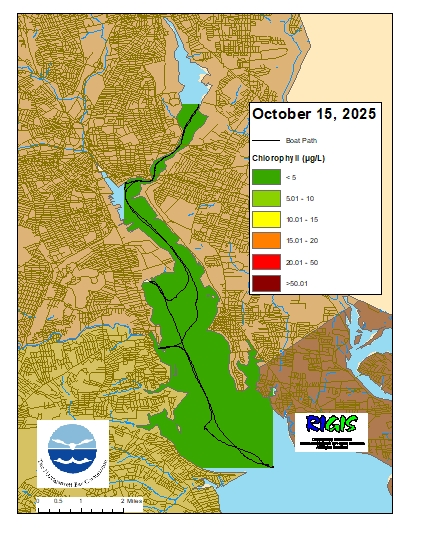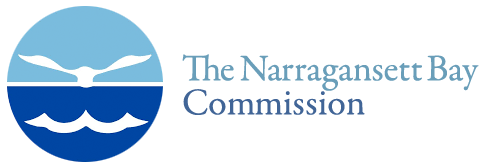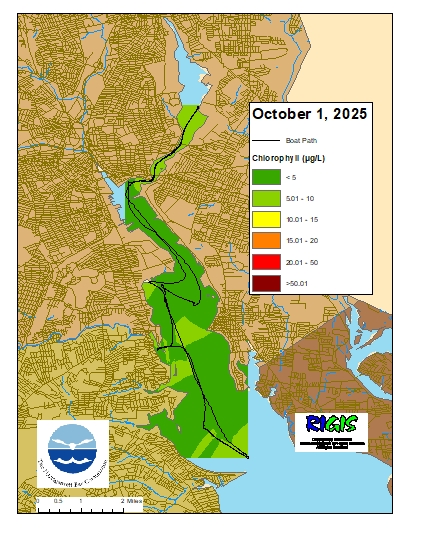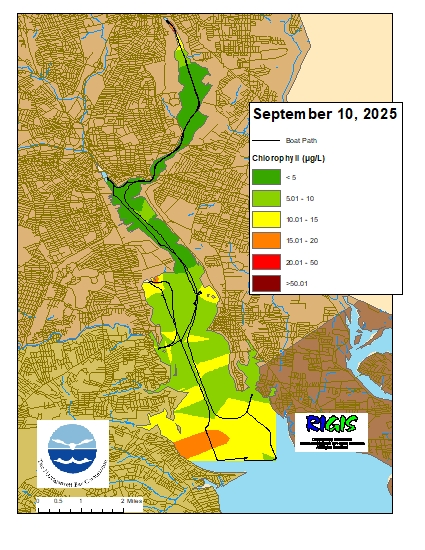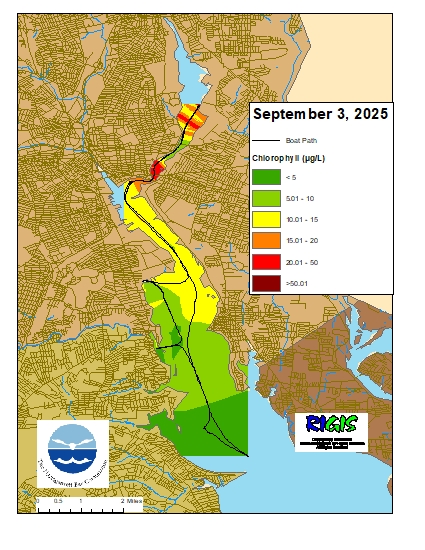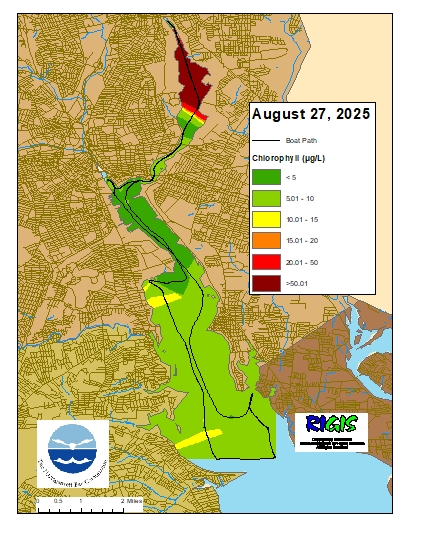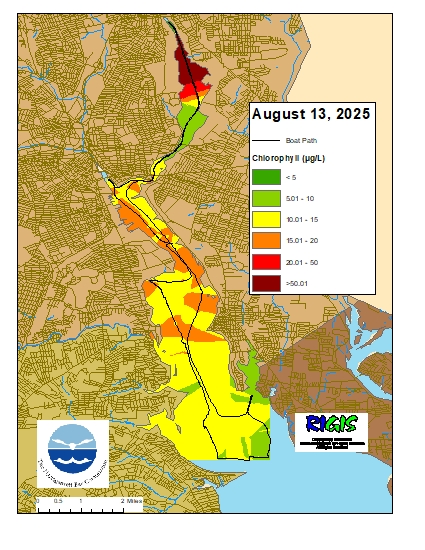October 15, 2025
Surface chlorophyll data were collected on October 15, 2025, while the R/V Monitor was underway collecting nutrient samples in the Providence and Seekonk River estuary. The average chlorophyll concentrations were categorized as good in all areas. The average chlorophyll concentrations were also categorized as good over all areas surveyed. Overall, chlorophyll ranged from 0.64 µg/L to 3.60 µg/L with an average of 1.57 µg/L. The chlorophyll concentrations from this date are presented in the map below using Inverse Distance Weighting (IDW) interpolation.
